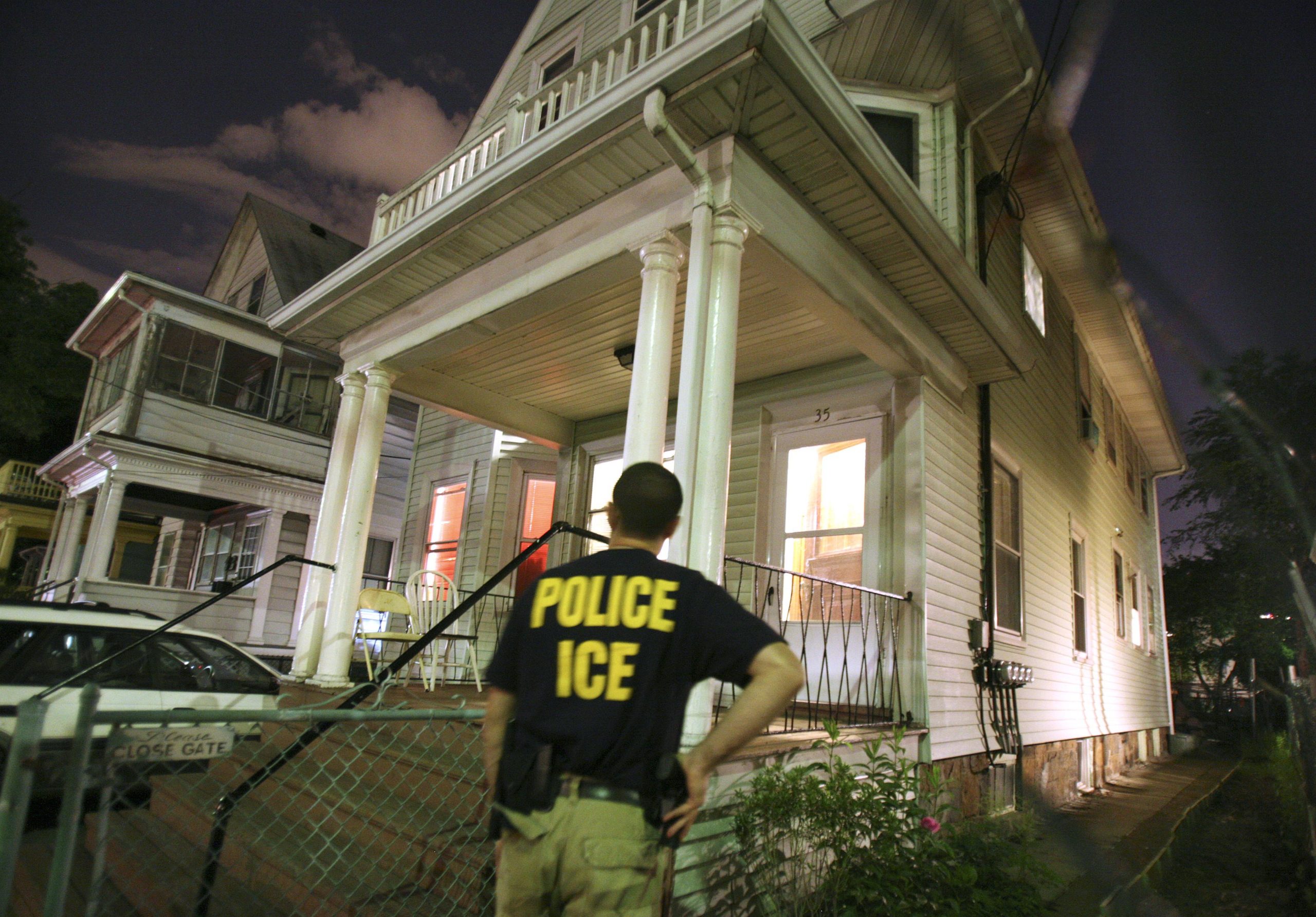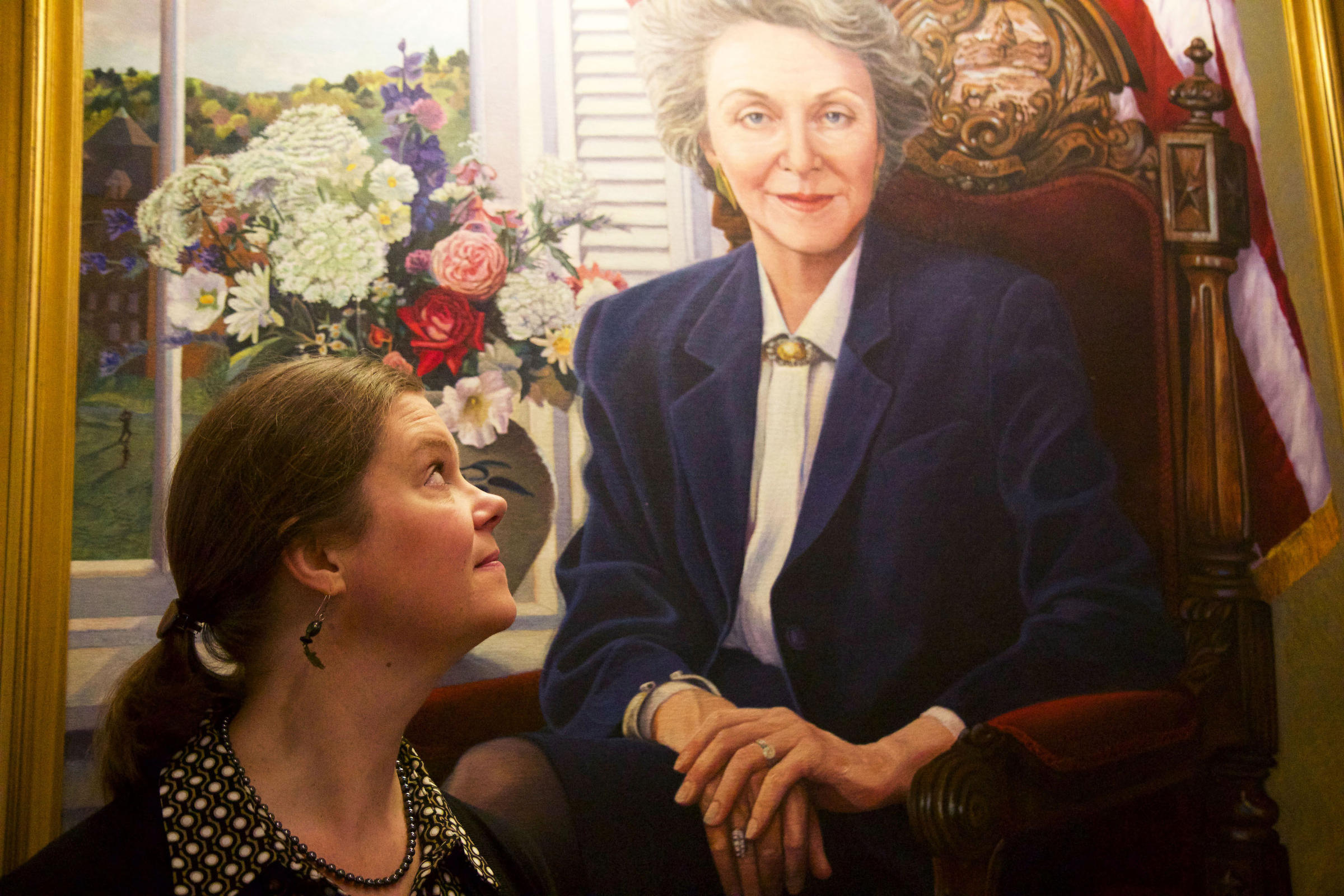Episode 186: The ‘Choice’ In School Integration; Feds Ramp Up Immigration Enforcement In Some Sanctuary Cities
White parents say they want their kids to go to integrated schools. But when they’re given the power to choose, schools tend to be more segregated. This week on NEXT, we’ll dig into a recent report on school choice. And we hear from a mother who says her son was on the losing side of school integration. Plus, a soldier exposed to secret nuclear weapons tests during the Cold War returns to college at 83.
Do Parents Really Want School Integration?

Third-graders work on a math program in the library at Sanchez Elementary School in Hartford. (Ryan Caron King / Connecticut Public)
A new report says the majority of U.S. parents want schools that are racially and economically integrated. But in districts where parents have school choice, schools tend to become more segregated.
“Part of the reason for that is that parents are ranking things like school safety and academic quality higher than integration,” said Eric Torres, a PhD student and co-author of the report from the Making Caring Common Project at Harvard University’s Graduate School of Education.
But some of the metrics parents use to evaluate quality and safety are not accurate, Torres said.
Hartford, Conn., has been held up by researchers and U.S. education officials as a model for school integration. The capital city, predominantly black and Latino, is mostly surrounded by white suburbs. More than two decades ago, in a court case called Sheff v. O’Neill, the Connecticut Supreme Court ruled that Hartford’s black and Latino children were at a huge disadvantage because their schools were racially segregated.
After the Sheff decision, publicly-funded magnet schools were built in the Hartford area as a way to voluntarily integrate schools — and attract white families. Admissions were decided by lottery, with a requirement that white or Asian students had to comprise 25 percent of a magnet school’s student body.
Since then, thousands of city and suburban students have gone to magnet schools. But Kamora Herrington’s son Isaiah is not one of them.
“My kid was not able to go there because we did not win a lottery,” said Herrington, who is black and a community advocate in Hartford.
Herrington told NEXT that she entered her science-minded, 8-year-old son into the lottery multiple times — hoping he would win a seat into the environmental sciences magnet school right across the street from their home. But he was never chosen.
“Lots of little white families were able to send their children,” Herrington said.
This year, 38 percent of Hartford children who entered the lottery did not get in, according to The Connecticut Mirror. But in January, there was a settlement in the Sheff desegregation case. The state agreed to open up more spots for Hartford students in magnet schools, and it switches up the lottery system to focus on a family’s socioeconomic status.
Feds Increase Immigration Agents In Boston, Other Sanctuary Cities

An agent from Immigration and Customs Enforcement keeps watch at the side of a house while other agents from ICE search inside for a suspect in the Boston area. (Michael Dwyer / AP)
U.S. Customs and Border Protection agents have been deployed to Boston from across the country to assist Immigration and Customs Enforcement. ICE says the agents are needed to help with enforcement in sanctuary cities like Boston. The additional agents will help arrest undocumented immigrants with criminal records, according to Todd Lyons, the acting director of ICE’s Boston Field Office.
WBUR immigration reporter Shannon Dooling talks to NEXT about the latest developments.
Whose History? Statehouse Art Collection Draws Scrutiny For Lack Of Diversity

Addison County Sen. Ruth Hardy with a portrait of Madeleine Kunin, Vermont’s only female governor. Hardy has introduced a bill to create a taskforce to diversify the Statehouse’s portraiture, which currently includes three women and no people of color. (Elodie Reed / VPR)
The Vermont Statehouse is where lawmakers conduct the people’s business. And it also happens to be one of the most-visited museums in the state. In taking a closer look at the art that hangs on the Statehouse walls, some politicians have noticed a theme: virtually all of the building’s framed portraits are of “old, white guys.”
Also on this week’s show:
- Racial Tensions At School Help Student Discover The Power Of Her Voice
- A Beginner’s Try At Ice Climbing In Southern New England
- 6 Decades Later, This Atomic Vet Is Finishing His Music Education
- A.E. Hotchner, Novelist, Playwright, Westporter, Dies At 102
About NEXT:
NEXT is produced at Connecticut Public Radio
Host/Producer: Morgan Springer
Executive Editor: Vanessa de la Torre
Senior Director: Catie Talarski
Contributors to this episode: Carrie Jung, Shannon Dooling, Peter Hirschfeld, Patrick Skahill, Diane Orson and Davis Dunavin.
Guests: Eric Torres and Kamora Herrington.
Music: Todd Merrell, “New England” and “Crazy” by Goodnight Blue Moon, “By The Phone” and “Rock With Me” by West End Blend and “On My Way To You” by Noelle Micarelli.
New to NEXT? You can find every episode or one you missed within our archives.
We want your feedback! Send critiques, suggestions, questions, and ideas to next@ctpublic.org. Help us spread the word! If you like what you hear, rate and review us on iTunes.
